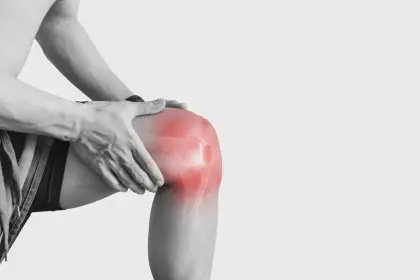That satisfying “pop” when you twist your neck might provide momentary relief, but the risks associated with this common habit deserve serious attention. Many people instinctively crack their necks when experiencing tension or discomfort, not realizing they could be causing more harm than good. Understanding why this habit can be dangerous—and what safer alternatives exist—can help protect your neck health while still addressing the underlying discomfort that drives you to seek relief.
The complex architecture of your neck
The neck represents one of the most intricate and vulnerable regions of the human body. This remarkable structure must balance seemingly contradictory demands—providing exceptional mobility while simultaneously supporting the weight of your head and protecting the vital nerve pathways of the spinal cord.
Your cervical spine consists of seven vertebrae (labeled C1 through C7) connected by facet joints that allow for the neck’s impressive range of motion. Between these vertebrae lie intervertebral discs that act as shock absorbers, cushioning the bones during movement. Surrounding these structures is an elaborate network of muscles, ligaments, and tendons that provide stability and facilitate motion.
What makes the neck particularly vulnerable is its proximity to critical structures. The vertebral arteries, which supply blood to the brain, travel through small openings in the cervical vertebrae. The spinal cord passes through the central canal, with nerve roots branching out through openings between vertebrae. This concentration of vital structures within a relatively small area means that injury to the neck region can have serious consequences.
When you self-administer a neck crack, you apply forces to this delicate architecture without the precision or knowledge that would guide a professional. This blind manipulation poses risks that far outweigh the temporary satisfaction of hearing that popping sound.
What actually happens during neck cracking
The distinctive cracking sound that accompanies joint manipulation doesn’t actually come from bones realigning or grinding against each other, as many people believe. The phenomenon, known as cavitation, occurs within the synovial fluid that lubricates and nourishes your joints.
During quick stretching movements, negative pressure forms within the joint space, causing dissolved gases in the synovial fluid to form bubbles that then rapidly collapse. This collapse creates the audible popping sound many find satisfying. After cavitation occurs, the joint typically cannot be “cracked” again for about 20-30 minutes while the gases gradually redissolve into the synovial fluid.
While this process isn’t inherently harmful when it happens naturally during movement, repeatedly forcing cavitation through aggressive manipulation introduces unnecessary stress to the joint structures. Over time, this can potentially lead to joint instability as ligaments become stretched beyond their normal range.
The temporary relief many experience after cracking comes primarily from the stimulation of nerve endings and a brief relaxation of surrounding muscles. However, this relief generally proves short-lived and can create a cycle of increasing dependence on the cracking sensation.
The significant risks of self-manipulation
Self-administered neck cracking carries several potential risks that range from minor to severe. While catastrophic outcomes remain relatively rare, the cumulative effects of this habit can lead to lasting problems.
Joint hypermobility represents one of the most common long-term consequences. Repeatedly stretching the ligaments that stabilize your neck joints can lead to excessive mobility. While additional movement might initially seem desirable, hypermobile joints lack the stability needed for proper function, potentially leading to chronic pain and accelerated degeneration.
Soft tissue damage can occur when untrained manipulation strains muscles, tendons, and ligaments beyond their normal capacity. Unlike controlled adjustments performed by professionals, self-manipulation often involves jerky, uncontrolled movements that can tear delicate tissues, leading to inflammation and prolonged discomfort.
While exceptionally rare, vertebral artery injury stands as the most serious potential complication. The vertebral arteries travel through small openings in the cervical vertebrae, making them vulnerable to damage during certain rotational movements. In extremely unusual cases, forceful manipulation could damage these vessels, potentially restricting blood flow to the brain or causing small tears that lead to blood clot formation.
Nerve impingement presents another significant risk. Improper manipulation techniques can compress nerve roots exiting the spinal column, resulting in radiating pain, numbness, or tingling sensations down the arms. In some cases, these symptoms can persist long after the initial manipulation.
The psychological dimension of habitual cracking also warrants consideration. Many people develop a dependence on the sensation, feeling they need to crack their neck with increasing frequency to achieve the same relief. This habit can become a counterproductive coping mechanism that masks underlying issues rather than addressing them.
Professional manipulation versus self-cracking
Professional spinal manipulation performed by licensed chiropractors or osteopathic physicians differs significantly from self-administered cracking in several critical ways. Understanding these differences helps explain why one approach can be therapeutic while the other poses risks.
Training and expertise represent the most obvious distinction. Chiropractors undergo extensive education, typically completing 4-5 years of specialized training after undergraduate studies. This education includes detailed study of spinal anatomy, biomechanics, and specific manipulation techniques. This knowledge allows them to identify which segments need adjustment and which should be left alone—a distinction impossible for untrained individuals.
Diagnostic assessment forms an essential component of professional care that’s entirely absent from self-manipulation. Before performing any adjustment, qualified practitioners conduct a thorough evaluation that may include physical examination, orthopedic testing, and sometimes imaging studies. This assessment ensures the treatment addresses the actual problem rather than simply producing a satisfying sound.
Precision in technique marks another crucial difference. Professional adjustments use specific contact points, controlled vectors of force, and appropriate leverage to affect particular segments of the spine. These techniques minimize stress on surrounding structures while maximizing therapeutic benefit. In contrast, self-manipulation typically involves gross movements that indiscriminately stress multiple segments simultaneously.
Force calibration represents a refined skill healthcare professionals develop through training and experience. They learn to apply the minimum force necessary to achieve the desired effect, reducing the risk of tissue damage. Those attempting self-manipulation typically lack this calibration ability, often applying excessive force in their efforts to produce the cracking sound.
Follow-up care and monitoring complete the professional approach. A qualified practitioner tracks your response to treatment, making adjustments to the care plan as needed and providing supplementary recommendations for exercise, posture, and lifestyle modifications that address underlying causes.
Six safer alternatives for neck relief
Rather than risking injury through self-manipulation, consider these safer alternatives that can provide genuine relief from neck tension and discomfort:
- Controlled neck stretches offer an effective way to improve mobility and reduce tension without the risks of cracking. Gentle movements that take the neck through its natural range of motion—including forward flexion, side bending, and controlled rotation—can significantly reduce stiffness. For maximum benefit, hold each stretch for 20-30 seconds without bouncing or forcing movement beyond comfortable limits. Performing these stretches several times daily, especially after periods of immobility, helps maintain flexibility and prevent tension buildup.
- Heat therapy provides excellent relief for tight, tense neck muscles. The application of warmth increases blood flow to the area, helping nutrients reach tissues while carrying away inflammatory compounds. A warm shower directed at the neck and shoulders, a heating pad set on low, or a microwaveable heat pack applied for 15-20 minutes can significantly reduce muscle tension. Heat proves especially effective for chronic neck discomfort rather than acute injuries, which respond better to cold.
- Cold therapy excels at reducing inflammation and numbing pain, making it ideal for acute neck injuries or flare-ups. Applying an ice pack wrapped in a thin cloth for 15-20 minutes reduces swelling and temporarily blocks pain signals. Some individuals find alternating between heat and cold (known as contrast therapy) particularly effective for stubborn neck tension.
- Professional massage addresses the muscular component of neck discomfort that manipulation alone cannot target. Licensed massage therapists can identify and release specific trigger points and adhesions in the muscles supporting your neck. Regular massage not only reduces current tension but can prevent future problems by improving tissue health and circulation. Even self-massage techniques, when properly learned, can provide significant relief between professional sessions.
- Postural correction often eliminates the underlying cause of neck tension. Many people develop neck pain from sustained poor postures, particularly the forward head position common during computer use or smartphone scrolling. Working with a physical therapist or other movement professional to correct these patterns can resolve neck discomfort without any need for manipulation. Simple awareness practices, proper ergonomic setup, and regular movement breaks throughout the day can transform neck health over time.
- Targeted strengthening exercises for the deep neck flexors and upper back muscles create better support for the cervical spine. These exercises don’t provide immediate relief like cracking might, but they address the underlying weakness and imbalance that often lead to neck problems. A physical therapist can design a specific program tailored to your needs, typically involving gentle resistance training that progressively builds endurance in key stabilizing muscles.
When professional care becomes necessary
While self-care measures suffice for many instances of neck discomfort, certain situations warrant prompt professional attention. Recognizing these warning signs can prevent minor issues from developing into serious problems.
Persistent pain that lasts more than a week despite conservative measures suggests an underlying condition that requires proper diagnosis. Professional assessment can identify whether the pain stems from a simple muscle strain or a more complex issue like a disc problem or joint dysfunction.
Radiating symptoms such as pain, tingling, or numbness extending into the shoulders, arms, or hands indicate potential nerve involvement. These symptoms suggest compression or irritation of nerve roots exiting the spinal cord and require thorough evaluation to determine the cause and appropriate treatment.
Recent trauma, even seemingly minor incidents, can cause injuries that aren’t immediately apparent. Whiplash from minor vehicle accidents or falls can create subtle damage to soft tissues and joint structures that worsen over time without proper care.
Progressive weakness in the arms or hands represents a particularly urgent warning sign that could indicate significant nerve compression. This symptom requires immediate medical evaluation to prevent potential long-term neurological damage.
Headaches originating from the neck region (cervicogenic headaches) often respond well to appropriate professional care. If you notice your headaches worsen with certain neck positions or movements, cervical issues may be contributing to your symptoms.
Balance problems or dizziness associated with neck movement warrant immediate professional assessment. These symptoms could indicate vascular issues affecting blood flow to the brain or inner ear disruptions that affect balance mechanisms.
Finding the right professional help
When seeking professional care for neck issues, various practitioners offer different approaches. Understanding these differences helps you make informed choices based on your specific needs and preferences.
Chiropractors specialize in diagnosing and treating mechanical disorders of the musculoskeletal system, with particular expertise in spinal care. Their approach typically includes specific spinal adjustments along with soft tissue work, rehabilitative exercises, and lifestyle recommendations. Modern chiropractic care emphasizes evidence-based practices tailored to individual needs rather than one-size-fits-all approaches.
Physical therapists excel at improving movement patterns and building functional strength. Their treatment plans often focus on corrective exercises, manual therapy techniques, and education about body mechanics. For chronic neck issues or those related to postural problems, this rehabilitation-centered approach offers significant benefits.
Osteopathic physicians (DOs) receive conventional medical training plus additional education in the musculoskeletal system. Many practice osteopathic manipulative treatment (OMT), a hands-on approach that includes various techniques to improve function throughout the body. Their comprehensive medical background allows them to integrate manipulative care with other treatment modalities when appropriate.
Medical doctors, particularly those specializing in physical medicine and rehabilitation (physiatrists) or orthopedics, provide valuable care for complex neck conditions. They can order advanced diagnostic imaging when necessary and offer interventions ranging from medication management to injections for pain relief.
Massage therapists address the soft tissue components of neck problems, working to reduce muscle tension and improve circulation. Regular massage can complement other treatment approaches by maintaining tissue health between more structural interventions.
When selecting a practitioner, look for licensed professionals with specific experience treating neck conditions. Personal recommendations, reviews, and an initial consultation to discuss their treatment philosophy can help you find someone whose approach aligns with your preferences and needs.
Building lasting neck health
Beyond addressing immediate discomfort, developing habits that promote long-term neck health can prevent recurring problems and reduce dependency on any form of manipulation.
Ergonomic optimization of your work environment provides the foundation for neck health. Proper monitor height (with the top of the screen at or slightly below eye level), supportive chair positioning, and appropriate desk height all contribute to healthier neck positioning throughout the day. For those using mobile devices, bringing devices to eye level rather than looking down prevents the excessive forward head position that stresses cervical structures.
Sleep positioning plays a crucial role in neck health that many overlook. Side and back sleeping generally place less stress on the neck than stomach sleeping, which requires rotation of the head for breathing. Selecting an appropriate pillow that maintains natural spinal alignment during sleep can prevent morning stiffness and discomfort.
Stress management techniques address the often-overlooked psychological component of neck tension. Practices like mindfulness meditation, deep breathing exercises, and progressive muscle relaxation can reduce the muscle guarding and tension that contribute to neck problems. Many people unconsciously hold stress in their neck and shoulder muscles, creating chronic tightness that no amount of manipulation can permanently resolve without addressing the underlying tension.
Regular movement throughout the day prevents the stiffness that develops from sustained postures. Setting reminders to change positions, stretch, and move every 30-45 minutes can significantly reduce neck tension. Even brief movement breaks provide valuable circulation to tissues and reset muscle activation patterns.
Hydration and nutrition influence tissue health throughout the body, including the neck. Adequate water intake helps maintain the hydration of intervertebral discs, while an anti-inflammatory diet may reduce pain associated with inflammatory processes. Simple changes like increasing water consumption and reducing processed foods can support overall musculoskeletal health.
By incorporating these comprehensive approaches rather than relying on the quick but risky fix of self-manipulation, you create sustainable neck health that doesn’t require constant intervention. While the path takes more commitment than simply cracking your neck, the long-term benefits far outweigh the momentary relief of that popping sound.
Understanding the risks associated with self-manipulation empowers you to make healthier choices for neck care. With the various alternatives available—from simple stretches to professional treatment—there’s no need to resort to potentially harmful cracking for relief. Your neck, with its complex and vital structures, deserves care that truly supports its health rather than shortcuts that might ultimately compromise it.













